We talk about the features, advantages, and disadvantages of different heating systems. We provide useful advice on choosing the optimal solution for a private home.
The house will be warm if the heating system is correctly selected for it. At the same time, a prudent owner does not want to overpay, because energy prices are constantly rising. There are different ways to heat a private home. Let’s analyze the ones in demand and decide which heating is best for the home.
Types of heating systems for a private home
Water
A closed circuit with a coolant fluid moving inside. This can be antifreeze, saline solution, but most often water. That’s why the scheme got its name. The operating principle of water heating is very simple. The coolant is heated inside the boiler to high temperatures, after which it enters the supply pipeline. It fits each of the heating devices located in heated rooms. These are radiators or their equivalent, maybe water-type underfloor heating. The coolant gives up its heat to them and cools down, after which it is collected in the return pipe and returned to the boiler. Then the whole cycle repeats. Various types of boilers are used as a heat source. Let us briefly describe them.
Read more: Fireplace and stove with a water circuit: principles of operation
Solid fuel
They work on one or several types of solid fuel: peat, firewood, pellets, coal, briquettes, etc. The efficiency of such devices is about 80%; for pyrolysis and long-burning boilers, it can be about 85%. Solid propellant engines are distinguished by their simple design and low price, the fuel for them is available in almost all regions and is inexpensive. Manual models are completely energy-independent. Significant disadvantages include “dirty” work with soot and ash, and the need to arrange a fuel storage facility. In addition, solid propellant engines are difficult to automate, so they have to be serviced manually.
Read more: 7 myths about wood heating at home
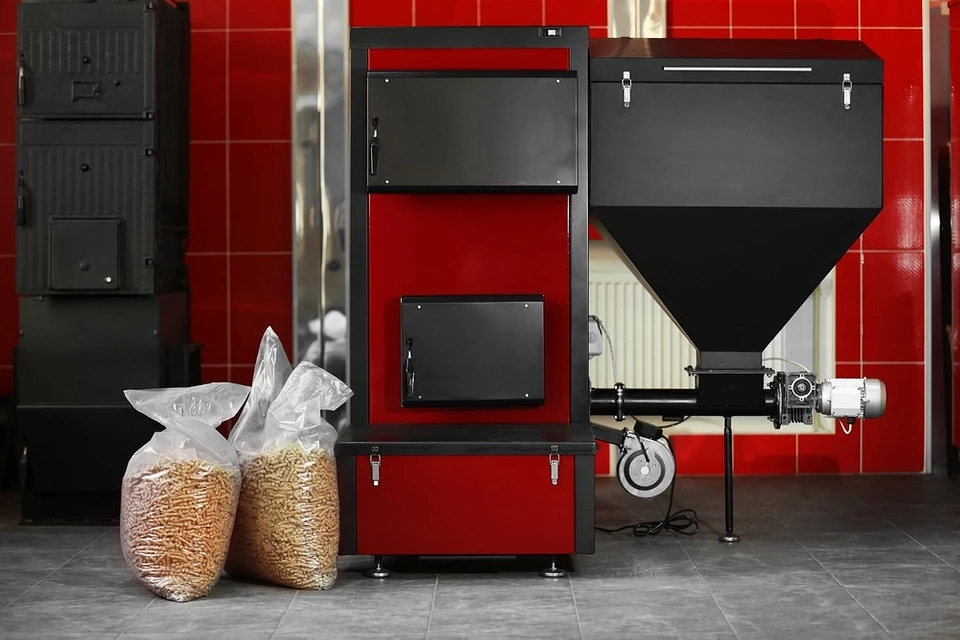
Gas
The equipment burns a propane-butane mixture. It can be natural or liquefied gas. In the first case, it will be much cheaper, but is only available if the highway is close. For the liquefied mixture, you need to equip a special gas tank storage. When choosing which heating is best for a private home, many prefer a gas boiler. This is due to its high efficiency, trouble-free, and efficient operation. Gas equipment is compact, there are even wall-mounted models, and fuel is consumed economically. At the same time, installation of the boiler and its connection requires permission, expensive design, and installation. Only specialists do it. Subsequently, maintenance is carried out only by them.
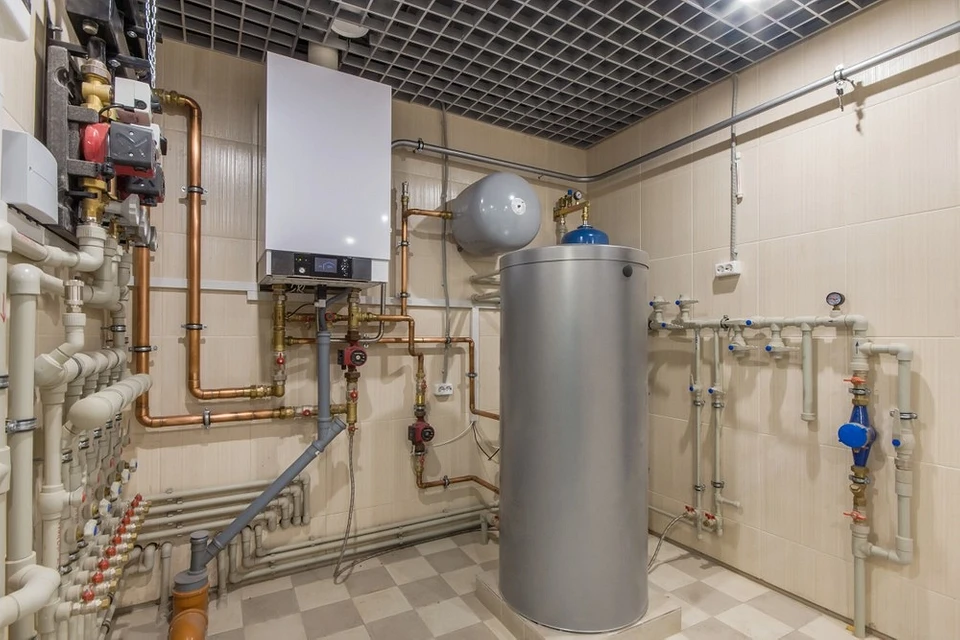
Electrical
The coolant is heated using a heating element. It’s simple and fast, no complex equipment, installation permits, or connections are required. The efficiency is very high. The electric boiler operates silently and cleanly. But at the same time, it consumes expensive electricity. Heating, even with energy-saving models, is quite expensive for the owner. In addition, electric boilers are completely dependent on electricity. If there are interruptions, there is a high risk of freezing.
Read more: How much does an electric heated floor consume: simple calculation
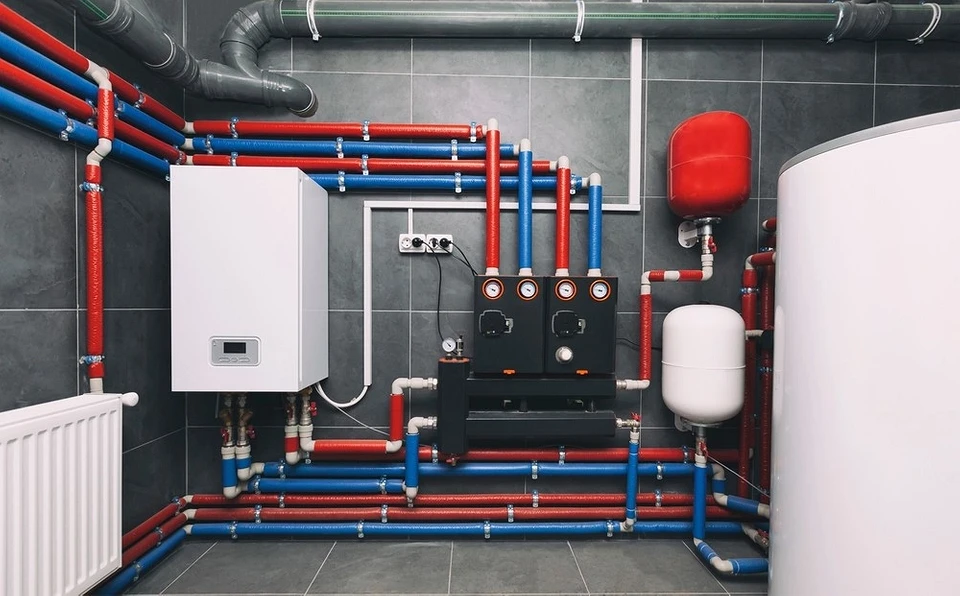
Liquid fuel
They run on diesel fuel. It burns and gives off heat to heat the coolant. Liquid fuel tanks are quite efficient; their installation does not require special permission. They are easily automated and can work without constant human intervention. At the same time, fuel is very expensive, and equipment is also expensive. In addition, it is necessary to arrange a storage facility for potentially dangerous diesel fuel and a special room for the boiler, which makes a lot of noise during operation.
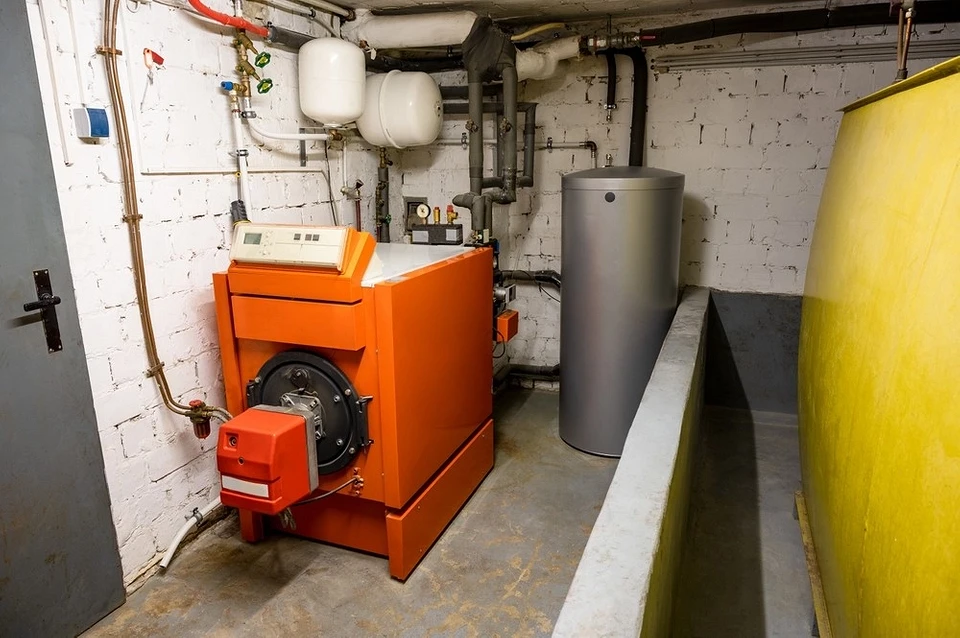
They produce combination boilers that can operate with several types of fuel. They are convenient for places where there are shortages of any one fuel. Such devices are effective, but more complex and expensive.
Systems with any type of boiler can be filled with different liquids: antifreeze, water, and saline solution. It is not difficult to determine which coolant is better for heating a private home. It is best to pour antifreeze into closed systems and circuits that may become inoperative at sub-zero temperatures. For open circuits and systems that will never be below freezing, water is sufficient.
Regardless of the type of boiler and coolant, All water systems have similar advantages and disadvantages.
pros
- Uniform, efficient heating of rooms.
- Variety of heating schemes.
- Almost a silent operation.
- Installation is possible at any time: during the construction phase or the renovation of an already inhabited house.
- Control over temperature, the ability to maintain set parameters in any room.
- Possibility of combining heating and organizing DHW.
Minuses
- Quite slow warming up. This may take four to five hours.
- Risk of pipeline rupture due to pressure surges or corrosion of metal elements.
- Risk of pipe rupture due to freezing. The water temperature inside the pipes must not be allowed to drop below zero. This is not relevant for antifreeze.
- Before preserving the system, the liquid must be drained from it.
- Radiators need periodic cleaning, otherwise their heat transfer suffers.
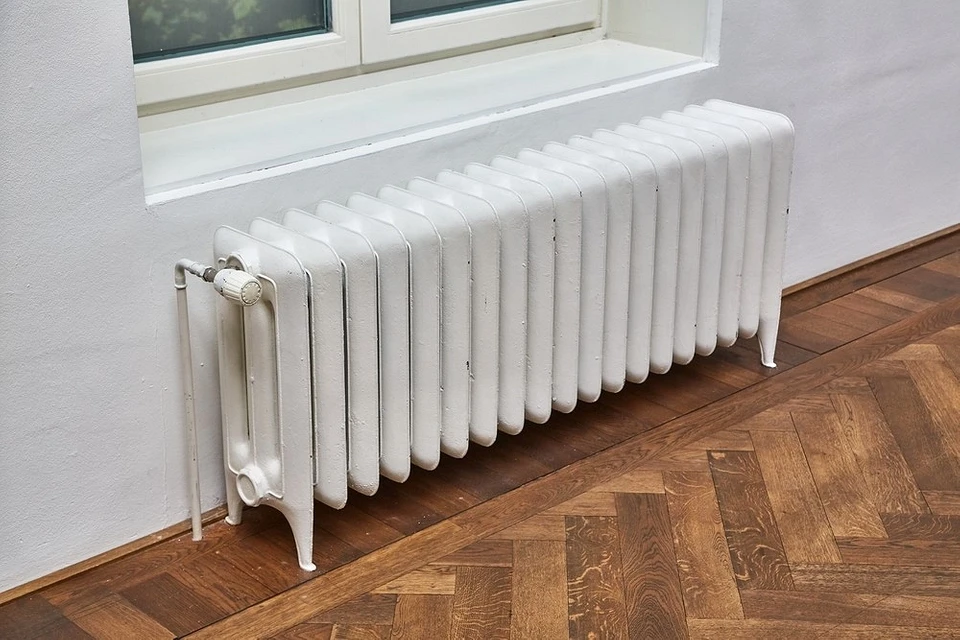
Air
Heated air is used to heat rooms. It is heated in a heat generator, which can run on gas, electricity, or solid fuel. The heated stream is supplied to the air ducts. They are located at the top of all heated rooms. With the help of fans, sometimes without them, heated air moves through air ducts and is supplied to rooms through diffusers. Here it gives off heat, gradually cools down, and falls down. Air intakes are installed in the lower part of the room, which collects the cooled flow and directs it to the heat generator for heating and a new cycle.
An air heating system can be combined with forced ventilation. Then the flow will not only be heated but also diluted with purified street air to increase the amount of oxygen. In summer, the system can operate without heating, or cooling the rooms. Automation is used to maintain a constant temperature.
Read more: Air heating system for a private house
pros
- Quickly warms up rooms. This takes about 15-20 minutes.
- Universal maintenance of a favorable microclimate: the possibility of cooling/heating.
- No possible problems with the coolant: freezing, gusts, etc.
- Reliability, simplicity of design, and long service life.
- The scheme is easily automated and expanded. You can supplement it with filters, a sterilizer, a humidifier, etc.
- Simple and inexpensive maintenance.
Minuses
- Installed only during construction.
- Air ducts are large, and take up quite a lot of space, and it is advisable to camouflage them.
- Installation is complex and expensive.
- The location of the air ducts should be consistent with the arrangement of furniture.
- Filters need to be replaced regularly.
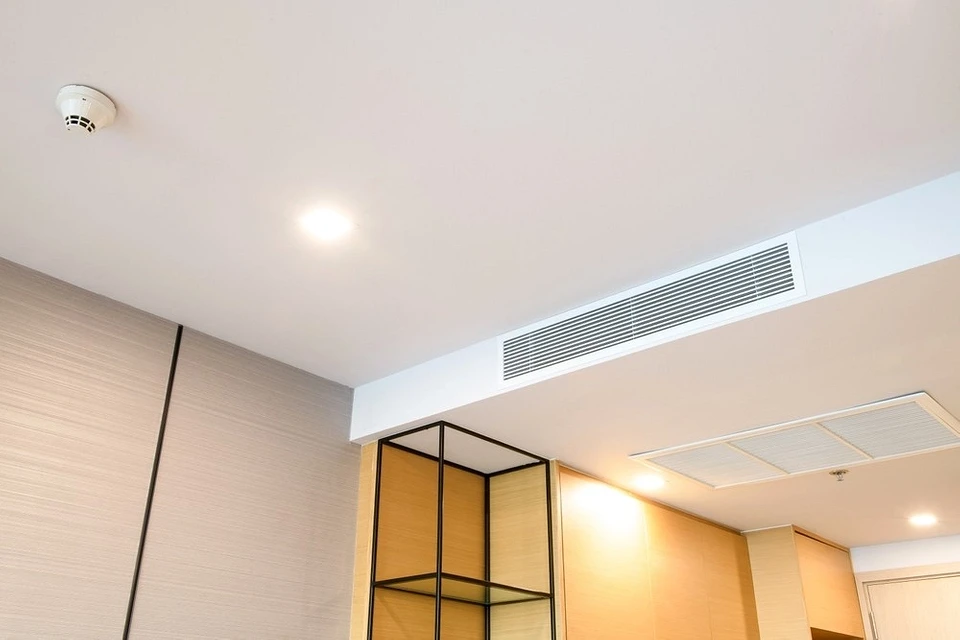
Electric
Electric heaters are installed in each heated room. These can be radiators, convectors, or IR emitters. It is possible to connect any type of infrared or electric underfloor heating. It can be the main or additional source of heat. Electric heating is relatively easy to assemble and does not require special permits for connection.
pros
- Quickly warm-up rooms.
- Absence of a heating circuit with coolant and associated problems.
- Relatively cheap equipment, easy installation.
- The scheme is easily automated; you can regulate the temperature in each room, and program the heating level at any time of the day or day of the week.
- Possibility of dismantling and assembly at a new location.
Minuses
- Powerful equipment requires large amounts of expensive electricity.
- Failures in the power supply lead to the heating circuit stopping operation.
- Good wiring and installation of multi-phase distributors are required.
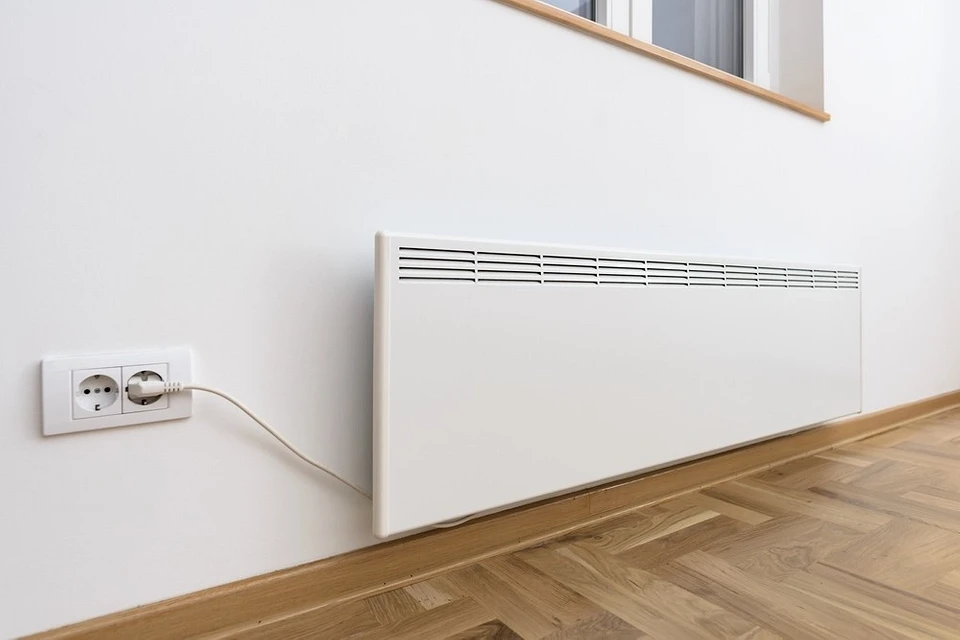
Steam
It is built on the water principle, but steam is used as a coolant. The water in the boiler is heated to a boil, the resulting steam is forced under pressure into the pipeline, and from there into the radiators. During the cooling process, condensation forms, it is collected in the return line and fed back into the boiler. The main difference between the steam circuit is the high temperature of the coolant. Therefore, the safety requirements for the circuit have been increased; high-strength materials and specially designed radiators are used for its manufacture.
pros
- Quick heating of the room.
- High efficiency due to enhanced heat transfer.
- No coolant liquid, no need to drain it in an emergency.
- High steam temperature, which reduces the risk of freezing and makes it possible to install a circuit of smaller diameter pipes.
- Relatively low price of the finished system.
Minuses
- Lack of ability to regulate coolant temperature.
- Noise during operation.
- Difficult installation.
- The pipeline corrodes quite quickly from the inside.
- Heating appliances get very hot. There is a high risk of getting burned when touching the battery.

Energy of sun
Using solar panels or solar systems to heat the building. In the first case, batteries accumulate electricity, which powers electric radiators, convectors, boilers, etc. Solar systems immediately heat the coolant. In any case, the elements use the energy of the sun in their work, so they are installed only where there are many sunny days, or they are installed as additional heating.
Read more: Alternative energy sources for the home: solar panels and wind
pros
- Lack of fuel and costs for its purchase.
- Fast payback of equipment.
- Easy to use.
- A variety of schemes use solar energy.
Minuses
- Energy-storing elements are placed on a plane, usually on the roof, only at a slope of 30˚.
- The need to carry out complex calculations to create an effective scheme.
- The high price of equipment.
Read more: How do hybrid heating systems work?
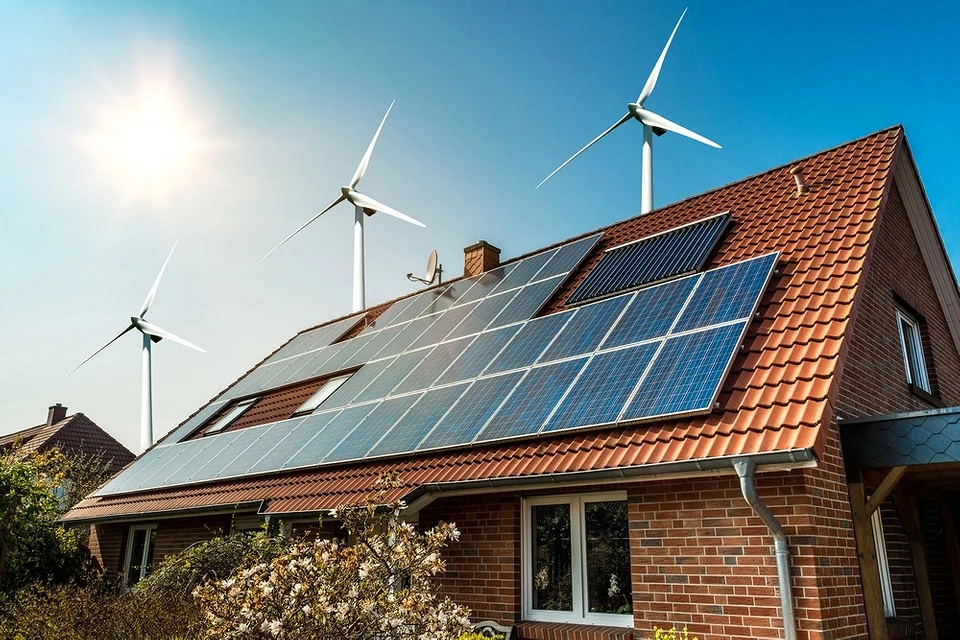
Geothermal
An autonomous geothermal installation is used for heating. The principle of its operation is to extract heat from water or soil. They do it like this. The non-freezing liquid is supplied through a pipeline to a collector located deep in the soil or a reservoir. Here it heats up and moves to the heat pump. The equipment collects heat, cools the liquid, and then the process repeats. In this way, it is possible to heat the building all year round, since in the deep layers of the soil there is enough heat even in winter for the operation of a geothermal installation.
pros
- The circuit functions normally in any climatic conditions.
- Possibility of operation without heating to cool rooms in the summer heat.
- Minimal operating costs. No fuel and no need to pay for it.
- Uninterrupted receipt of the required amount of heat resources.
Minuses
- Expensive equipment, the payback period is not earlier than 8-10 years.
- Complex and expensive installation.
Read more: Air-to-air heat pump for home heating: free, environmentally friendly, safe
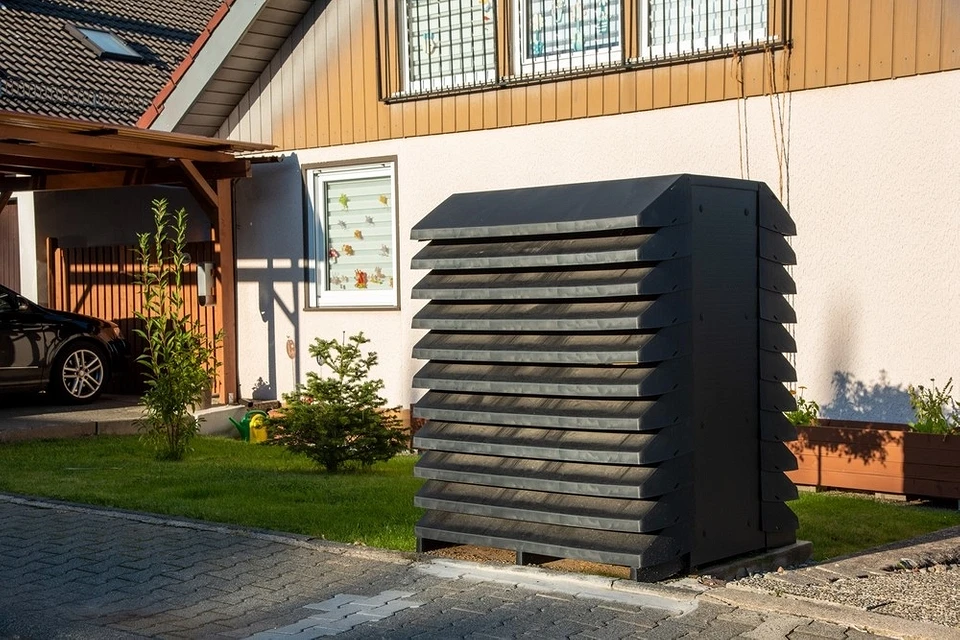
How to choose which heating is best for a private home
To make it easier to choose which type of heating is best for a private home, we have compiled a comparison table.
| Water, solid fuel boiler | Water, gas boiler | Water, electric boiler | Water, liquid fuel boiler | Air | Electrical | Steam | Solar energy | Geothermal | |
|---|---|---|---|---|---|---|---|---|---|
| Efficiency | Average | High | High | Average | High | High | High | Average | High |
| Automation | Most often partial | Full | Full | Full | Full | Full | Partial | Full | |
| Installation | Under construction, in a residential building | Under construction, in a residential building | Under construction, in a residential building | Under construction, in a residential building | Under construction | Under construction, in a residential building | Under construction, in a residential building | Under construction, in a residential building | Under construction |
| Peculiarities | When burned, soot and ash are formed and must be cleaned frequently. Fuel is most often added manually; a place is needed to store it. | A gas installation permit is required. It is advisable to have a gas pipeline nearby so that you can connect. | It works without soot and ash, no connection permission is required. | No permission required. It is necessary to arrange a safe storage for fuel and a room for the boiler. | Oversized air ducts take up a lot of space; it is advisable to disguise them. There may be noise when the fans are running. | Powerful electrical equipment requires high-quality wiring and installation of multiphase distributors. No installation permission is required. | Requires special permission for installation. High coolant temperature. In the event of an accident, hot steam escapes, which is dangerous. | Unstable work. Depends on solar activity. | Stable operation without using fuel. Expensive equipment and installation, long payback period. |
| Ease of use | More often manual fuel filling, frequent cleaning. | Can operate without frequent user intervention. | Can operate without frequent user intervention. | Can operate without frequent user intervention. | Can operate without frequent user intervention. | Can operate without frequent user intervention. | User control and settings required. | Can operate without frequent user intervention. | Can operate without frequent user intervention. |
| Fuel price | Relatively low | Low | High | High | Low | High | Low | No fuel | No fuel |
| Equipment price | Relatively low | High | Low | High | High | Relatively low | High | High | High |
| Installation price | Low | High, carried out only by specialists | Low | Average | High | Low | High | High | High |
When choosing which heating system is best for a private home, you need to consider several important points.
- Availability and price of different types of fuel.
- Climatic conditions.
- Features of the building.
- The desired degree of heating automation.
So, it is better to choose affordable and cheap fuel. For example, if there is a gas pipeline, it is worth considering schemes with gas heaters. If there is no mainline nearby, you need to understand that liquefied gas will be expensive. It’s better to choose something else. In areas where there is a lot of forest, it makes sense to choose pellets or fuel briquettes. They cost more than firewood, but due to the reduction in transportation costs, they will cost quite a budget. Their use will make it possible to install an automated solid-fuel boiler for water heating. It’s convenient and relatively cheap.
Climatic conditions are also very important. For warm regions, any type of electric heating or water heating with an electric boiler will compete with gas. The automated scheme will save as much as possible on energy costs, given that the cold period is short, it will be quite affordable and convenient to use. For cold regions, steam, air, and water heating are suitable.
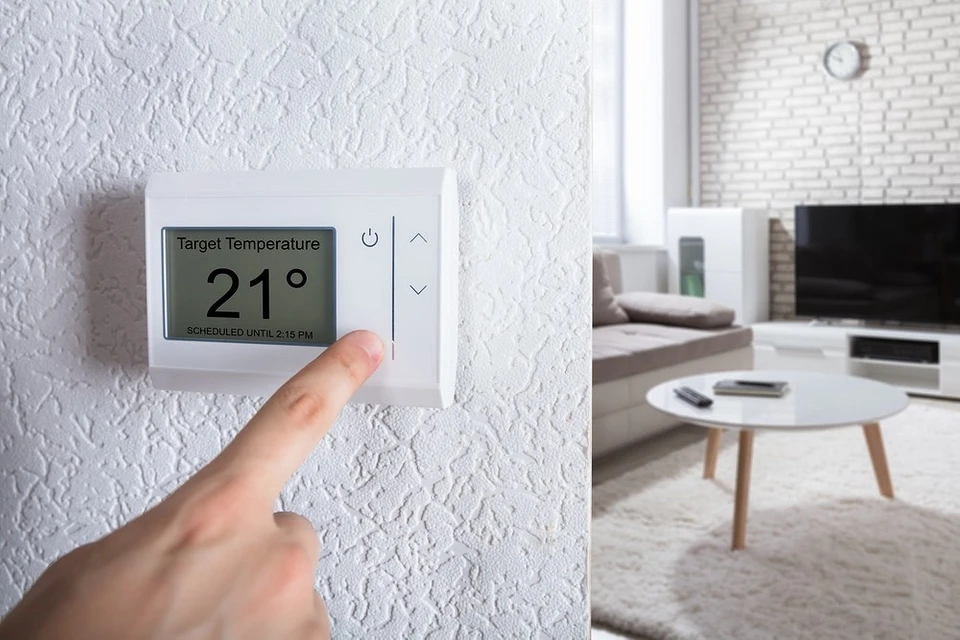
When choosing which heating scheme is best for a private home, be sure to take into account the characteristics of the building. Lightweight structures with hollow partition walls can be optimally heated using air ducts. Buildings made of brick or concrete are easier to heat with a water or steam system. When building a new home, it makes sense to consider a geothermal system. Especially if there is a body of water nearby. With a significant initial investment, you will subsequently get low-cost heating. Solar energy is best used in warm regions or as additional heating.
Read more: How to choose the best-heated floor for tiles: instructions and



